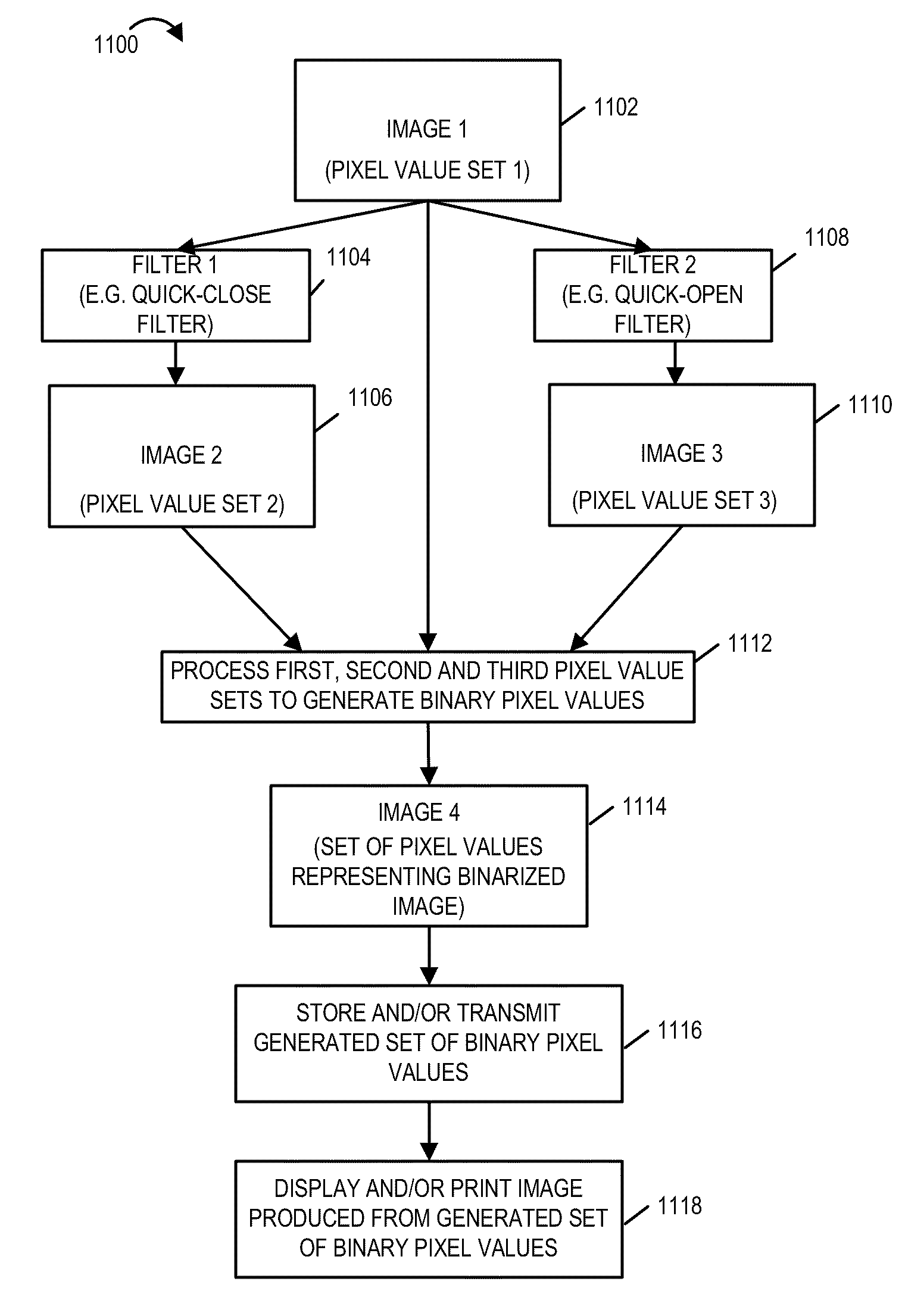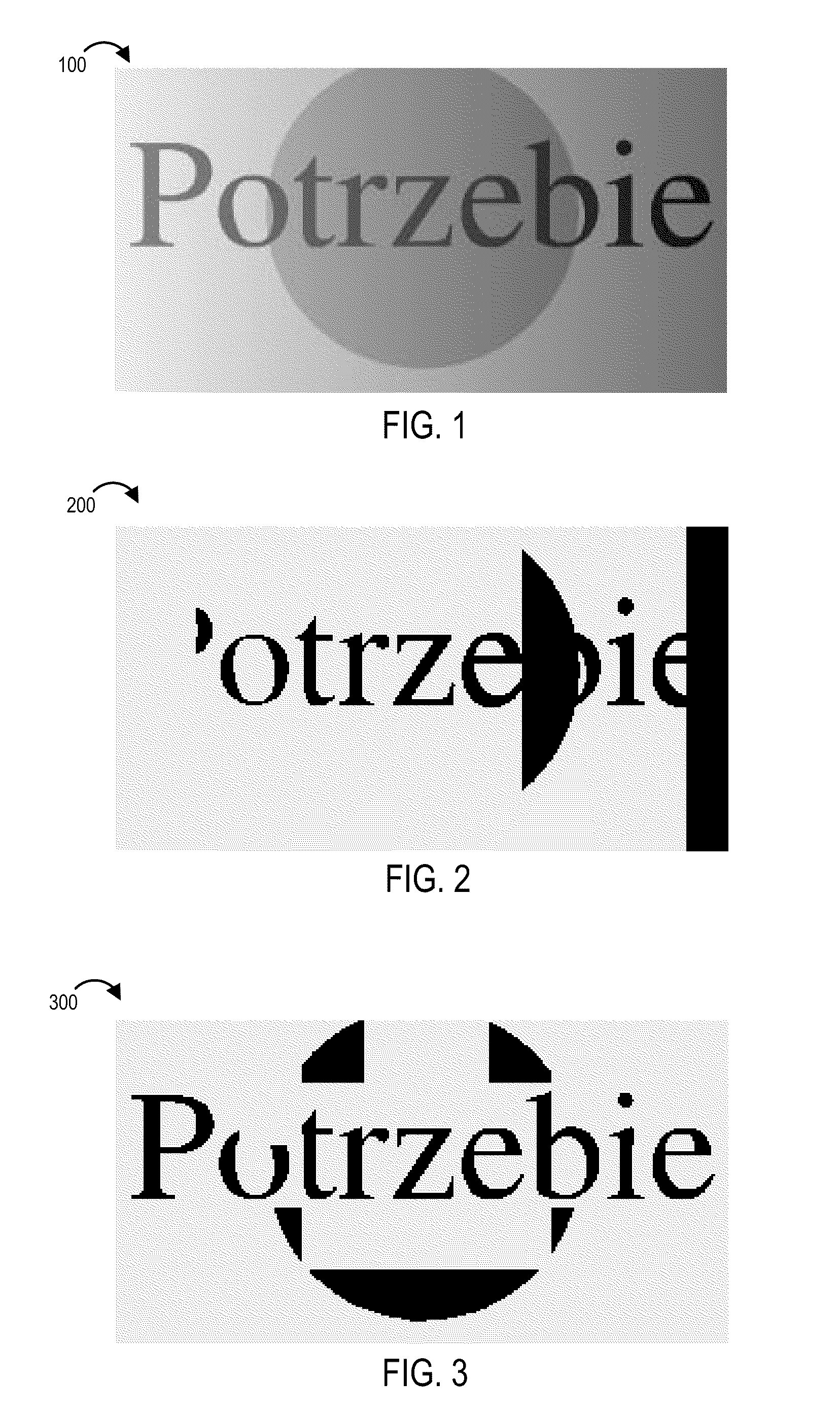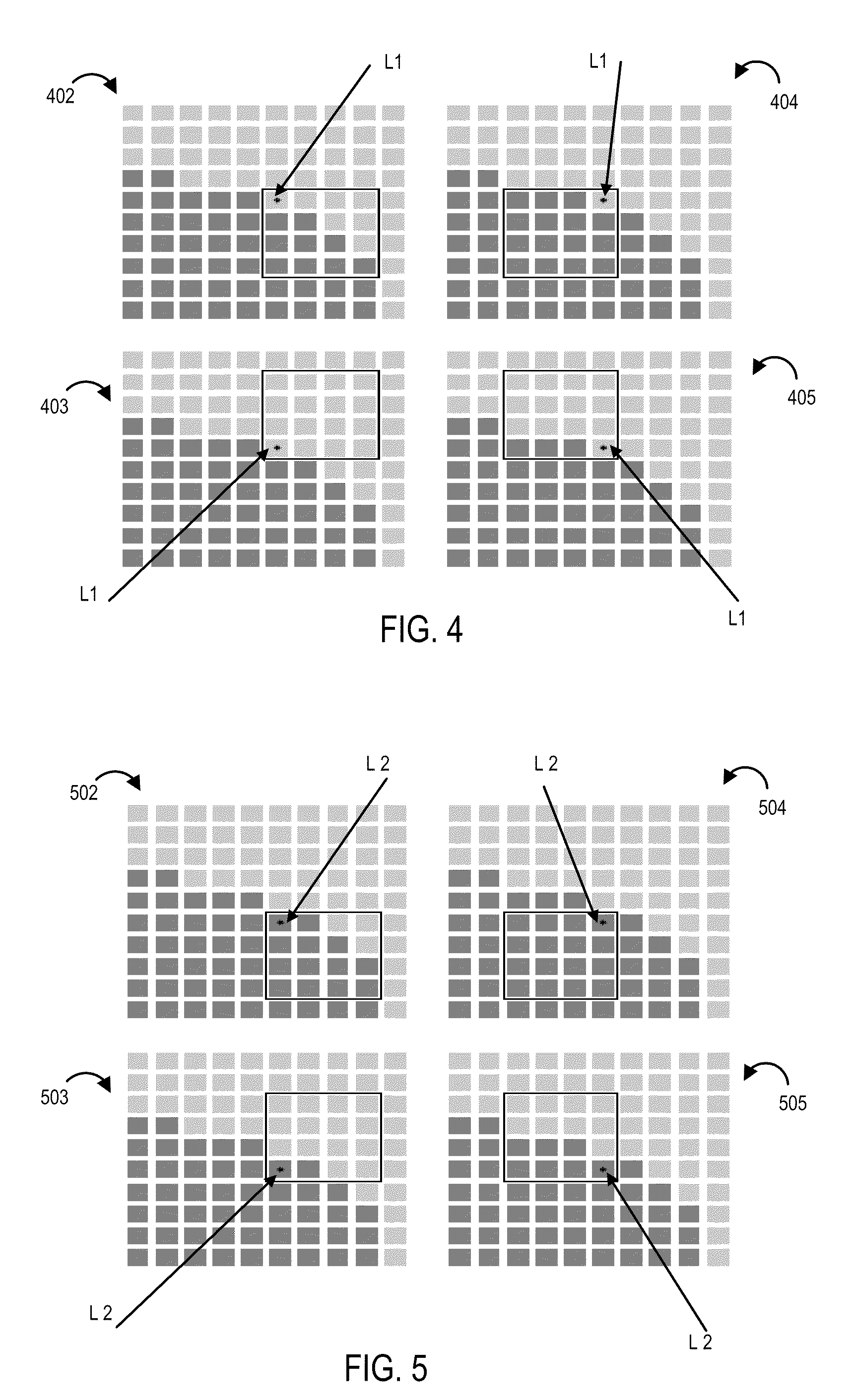Methods and apparatus for performing image binarization
a binarization and image technology, applied in the field of image processing methods, can solve the problems of inability to discriminate between relevant sharp edges separating foreground and background, inability to effectively separate foreground and background in the presence of one or more complicating images, and generating unwanted artifacts at the background edge, etc., to avoid the heavy computational load, less computational intensive, and less computational burden
- Summary
- Abstract
- Description
- Claims
- Application Information
AI Technical Summary
Benefits of technology
Problems solved by technology
Method used
Image
Examples
Embodiment Construction
[0037]This application describes a computationally efficient method of binarizing images. The images may have nonuniform foreground and background color or shading with the method still providing good results in most if not all cases. The method described herein is based, at least in part, on a pair of operations, e.g., filtering operations, which are less computational complex than the open and close operators used to implement the known ASF method.
[0038]The method of the present invention uses what are described herein as a “quick-close operator” and “quick-open operator” which are two types of morphological operators. When applied to a set of image data, the quick-open and quick-close operators perform filtering operations. Accordingly, the quick-open and quick-close operators are types of filters which have characteristics which will be discussed below.
[0039]In some embodiments, the filtering portion of the binarization method of the present invention involves roughly 19 compari...
PUM
 Login to View More
Login to View More Abstract
Description
Claims
Application Information
 Login to View More
Login to View More - R&D
- Intellectual Property
- Life Sciences
- Materials
- Tech Scout
- Unparalleled Data Quality
- Higher Quality Content
- 60% Fewer Hallucinations
Browse by: Latest US Patents, China's latest patents, Technical Efficacy Thesaurus, Application Domain, Technology Topic, Popular Technical Reports.
© 2025 PatSnap. All rights reserved.Legal|Privacy policy|Modern Slavery Act Transparency Statement|Sitemap|About US| Contact US: help@patsnap.com



